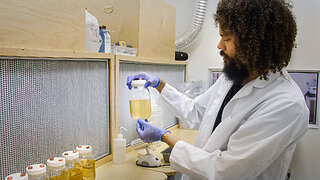NATIONAL Village MUSEUM - Trailer, BUCHAREST | 4k Virtual Tour | 🇷🇴
#virtualtour #indoorcycling #bucharest #bucuresti #bucarest #romania #citytour #cityscape #cyclingvlog #touristplace #discoverromania #cyclingworkout #cyclingaddict #urbancycling #museumtour
Museum Website : https://muzeul-satului.ro/
JOIN US :
https://www.youtube.com/channel/UCib-JDIHF_Btivu010jNd5g?sub_confirmation=1
https://www.instagram.com/snails_on_wh33ls/?hl=ro
https://www.tiktok.com/@snailsonwheelz?lang=en
https://www.facebook.com/snailsonwheels
This trailer features images from the 4k Virtual Tour made at the National Village Museum in Bucharest. A 17 minutes ride.
On the shores of Lake Herastrau, right in the middle of Romania's capital, visitors from all over the world have the joy of encountering a real "village", with monuments and artifacts from the 17th century to the early 20th century. Representative buildings from important ethnographic areas have been given a second life at the National Village Museum "Dimitrie Gusti".
The idea of an open-air museum in Romania has been around since the second half of the 19th century. In 1867 Alexandru Odobescu, an eminent man of culture, proposed the presentation of monuments of popular architecture in a specially designed pavilion at the Universal Exhibition in Paris. Sometime later, the scholar Alexandru Țzigara Samurcaș was to envisage bringing to the Ethnographic Museum of National Art, Decorative Art and Industrial Art in Bucharest, founded by him in 1906, some "authentic and complete households from all the most significant regions inhabited by Romanians", a project that materialized in 1909, with the exhibition in this museum of a peasant house from Gorj county.
In the 1930s, there were only two open-air museums in Europe: Skansen Museum in Stockholm (Sweden, 1891) and the Bygdoy Museum in Lillehamer (Norway). In our country, at that time, the Ethnographic Museum of Transylvania in "Hoia" Park of Cluj, founded in 1929 by Professor Romulus Vuia, with regional specificity, and the Romanian Village Museum (today the National Village Museum "Dimitrie Guști") in Bucharest, since 1936, with a national character.
The creation of the Village Museum is the result of intense and sustained theoretical and field research, of museographic experiments, for over a decade, coordinated by Professor Dimitrie Gusti, founder of the Sociological School in Bucharest. As head of the Department of Sociology at the University of Bucharest, Gusti organized between 1925-1935, with specialists from various fields (sociologists, ethnographers, folklorists, geographers, statisticians, physicians) and his students, monographic research campaigns of an interdisciplinary nature in a relatively large number of villages (Fundu Moldovei - Suceava county, Nereju - Vrancea county Dragus - Brasov county, Dragomiresti - Maramures county, Clopotiva - Hunedoara county, Runcu - Gorj county, Rusetu - Buzau county etc.).
On the basis of these experiences, of a hard work of conception and of the moral and material support of the Royal Foundation "Prince Charles", in March 1936, in only two months, it was possible to build an exceptional museographic work. In this short period of time, the teams of specialists and students (the same ones who had participated in the field campaigns), led by Professors D. Gusti and H. H. Stahl, acquired peasant buildings (houses, outbuildings, churches, technical installations) and interior objects (furniture, ceramics, fabrics, tools, etc.) from the villages surveyed, which were considered representative of their places of origin.
In accordance with the criteria of authenticity and respect for local building traditions, which are still in force today, the construction of the museum was reassembled under the careful supervision of specialists, primarily Henry H. Stahl and Victor Ion Popa, craftsmen brought from the villages where the monuments originated.
The official opening of the Village Museum took place on 10 May 1936, in the presence of King Charles II, and a week later, on 17 May 1936.
Source : https://muzeul-satului.ro/en/despre-noi/istoric-muzeul-satului/
-
 11:26
11:26
Blue Siesta ASMR
1 day agoBETWEEN LIFE AND DEATH IN CANCUN
33.4K17 -
 15:36
15:36
Landed Fishing
2 days ago $0.01 earnedCatching Tarpon with Crab in Boca Grande! The Silver King Capital of the World New Fishing Gear 2024
28K3 -
 6:28
6:28
JoBlo Horror Originals
1 day agoWe Remember Roger Corman
37K4 -
 5:29
5:29
Michael Heaver
1 day agoDutch Finally Make ASTONISHING Decision
30.6K28 -
 30:42
30:42
Southwest Mushrooms
1 day ago $0.01 earnedMushroom Mycelium Tissue Culturing in Liquid and Agar Media | Southwest Mushrooms
22.2K3 -
 3:47
3:47
tksgarage
1 day agoTim Kuniskis Out As Dodge CEO!
17.9K3 -
 27:52
27:52
The Bitcoin Family
1 day ago $0.04 earnedBITCOIN 66K, NEXT TARGET IS CLEAR!!!
14K8 -
 12:06
12:06
Crypto Crew University
1 day ago $0.02 earnedWARNING: BITCOIN JUST ENTERED RED ZONE ON WAVE TREND – DO THIS NOW
10.6K2 -
 56:53
56:53
LFA TV
17 hours agoRenata Moon | UNCOMMON SENSE IN CURRENT TIMES | 5.18.24 @5pm EST
26.1K25 -
 2:42:39
2:42:39
Jewels Jones Live
1 day agoCOHEN: Perjurer of Congress Lies Again | A Political Rendezvous - Ep. 77
36.4K60